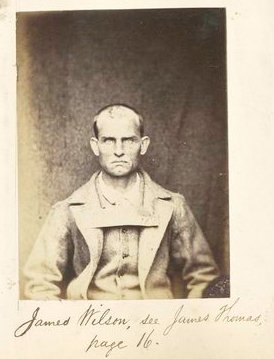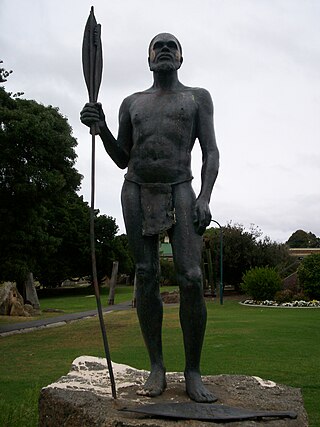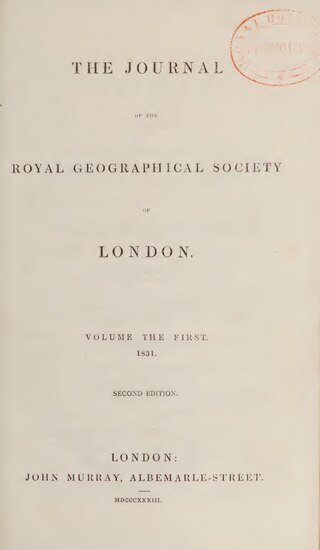
Yagan was an Aboriginal Australian warrior from the Noongar people. Yagan was pursued by the local authorities after he killed Erin Entwhistle, a servant of farmer Archibald Butler. It was an act of retaliation after Thomas Smedley, another of Butler's servants, shot at a group of Noongar people stealing potatoes and fowls, killing one of them. The government offered a bounty for Yagan's capture, dead or alive, and a young settler, William Keats, shot and killed him. He is considered a legendary figure by the Noongar.

John Lindley FRS was an English botanist, gardener and orchidologist.
Robert Menli Lyon was a pioneering Western Australian settler who became one of the earliest outspoken advocates for Indigenous Australian rights and welfare in the colony. He published the first information on the Aboriginal language of the Perth area.

King George Sound is a sound on the south coast of Western Australia. Named King George the Third's Sound in 1791, it was referred to as King George's Sound from 1805. The name "King George Sound" gradually came into use from about 1934, prompted by new Admiralty charts supporting the intention to eliminate the possessive 's' from geographical names.

The diary of George Fletcher Moore is an important record of early colonial life in Western Australia, because it is one of a few records that were written from the point of view of an ordinary colonist, as opposed to the official correspondence of a salaried public official. Tom Stannage describes the diary as "an immensely valuable social document" and "the best published guide we have to life in Swan River colony between 1830 and 1840."

George Fletcher Moore was a prominent early settler in colonial Western Australia, and "one [of] the key figures in early Western Australia's ruling elite". He conducted a number of exploring expeditions; was responsible for one of the earliest published records of the language of the Aboriginal Australians of the Perth area; and was the author of Diary of Ten Years Eventful Life of an Early Settler in Western Australia.

A Descriptive Vocabulary of the Language in Common Use Amongst the [Aboriginals ...] of Western Australia is a book by George Fletcher Moore. First published in 1842, it represents one of the earliest attempts to record the languages used by the Aboriginal peoples of Western Australia. The book is a compilation by Moore based on the works of Robert Lyon, Francis Armstrong, Charles Symmons, the Bussell family and George Grey, as well as his own observations. It was published in 1842 at the expense of Moore and Governor of Western Australia John Hutt. In 1884 it was republished as part of Moore's Diary of Ten Years Eventful Life of an Early Settler in Western Australia and also A Descriptive Vocabulary of the Language of the [Aboriginals ...].

The convict era of Western Australia was the period during which Western Australia was a penal colony of the British Empire. Although it received small numbers of juvenile offenders from 1842, it was not formally constituted as a penal colony until 1849. Between 1850 and 1868, 9,721 convicts were transported to Western Australia on 43 convict ship voyages. Transportation ceased in 1868, at which time convicts outnumbered free settlers 9,700 to 7,300, and it was many years until the colony ceased to have any convicts in its care.

Lieutenant Robert Dale was the first European explorer to cross the Darling Range in Western Australia.
Midgegooroo was an Aboriginal Australian elder of the Nyungar nation, who played a key role in Aboriginal resistance to white settlement in the area of Perth, Western Australia. Everything documented about Midgegooroo is mediated through the eyes of the colonisers, some of whom, notably G.F. Moore, Robert Menli Lyon and Francis Armstrong, derived their information from discussions with contemporary Noongar people, in particular the son of Midgegooroo, Yagan. Largely due to his exploits in opposing colonisation and his relationship with Lyon and Moore, Yagan has a much sharper historical profile than his father. Midgegooroo was executed by firing squad and without trial under the authority of Lieutenant Governor Frederick Irwin in 1833.

The exhumation of Yagan's head was the result of a geophysical survey and archaeological dig at a grave site in the Everton Cemetery, Liverpool in 1997. Yagan was an Aboriginal Australian warrior who was murdered in 1833 by British colonists, because of his resistance to the colonial British settlements in the Swan River Colony in Western Australia.
The Havell family of Reading, Berkshire, England, included a number of notable engravers, etchers and painters, as well as writers, publishers, educators, and musicians. In particular, members of this family were among the foremost practitioners of aquatint; and had a long association with Indian art and culture. The family first came to notice through the brothers Luke Havell and Robert Havell the Elder ; along with their nephew Daniel Havell.

Mount Dale is a mountain in Western Australia about 25 km (16 mi) east of Armadale in the Shire of Beverley. At 546 m (1,791 ft) high, it is one of the highest points in the Darling Scarp.

Banksia armata var. armata is a variety of shrub that is endemic to Western Australia. It differs from the other variety in having a lignotuber, narrower leaves with more side lobes and shorter flowers. It is also usually a shorter plant.

Mokare was a Noongar Aboriginal man from the south-west corner of Australia, who was pivotal in aiding European exploration of the area.

"A Sketch of the Vegetation of the Swan River Colony", also known by its standard botanical abbreviation Sketch Veg. Swan R., is an 1839 article by John Lindley on the flora of the Swan River Colony. Nearly 300 new species were published in it, many of which are still current.

Robert Barker was a painter from Kells, County Meath, Ireland, known for his panoramic paintings and for his coinage of the word "panorama".

Descriptive account of the panoramic view, &c. of King George's Sound, and the adjacent country is a pamphlet written by Robert Dale in 1834, containing description and commentary on the Panoramic View of King George's Sound, Part of the Colony of Swan River, a panorama of King George's Sound painted by Robert Havell. Together with prints of the Panorama, it was sold to attendees of an exhibition given in the home of Thomas Pettigrew. Dale was an ensign in the 63rd Regiment of Foot, which was posted to Western Australia in 1829. He was assigned to the Surveyor-General's department, and thus spent his four years in the colony exploring and surveying

General view of the botany of the vicinity of Swan River is an 1831 scientific paper by Scottish botanist Robert Brown. It discusses the vegetation of the Swan River Colony, and comments on its affinities with other regions. It has been described as "an essential step taken in our knowledge of the boundaries of the SW province".
Long View of London from Bankside is a panoramic etching made by Wenceslas Hollar in Antwerp in 1647. It depicts a panorama of London, based on drawings done while Hollar was in London in the early 1640s. Unlike earlier panoramas of London, Hollar's panorama takes a single viewpoint, the tower of St Saviour in Southwark, from where he made the drawings. It shows the River Thames curving sinuously from left to right past the viewpoint.

















